Iran welcomed the withdrawal of U.S. forces from Afghanistan while it also scrambled to deal with the sudden influx of thousands of refugees along the 572-mile border. For months, Iran had been positioning itself for the transition by hosting a Taliban delegation in January and intra-Afghan peace talks in July. In August, Iran’s new president, Ebrahim Raisi, hailed the U.S. withdrawal as “an opportunity to restore life, security and durable peace.”
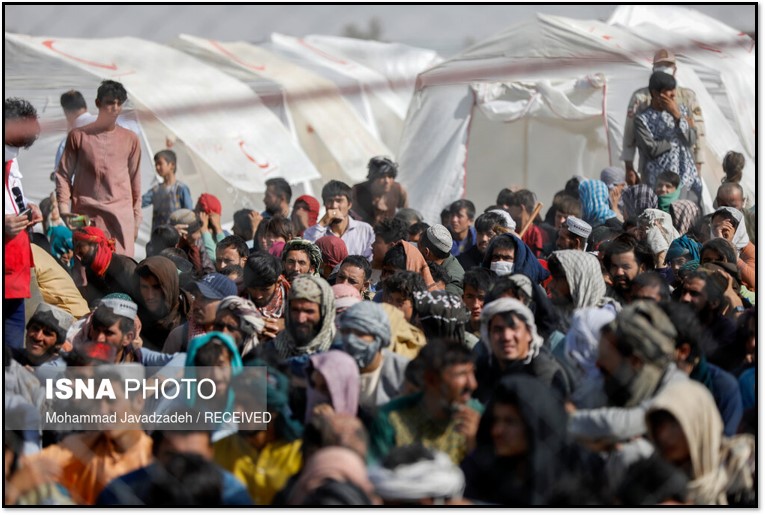
But Iran also appeared to be caught off-guard by the Taliban’s sweeping takeover and the rapid collapse of the Afghan army. Iran “is concerned over the escalating violence in Afghanistan, and in light of the Taliban taking control of Herat, calls for guarantees of complete safety for its diplomatic missions and the lives of its staff,” Foreign Ministry Spokesman Saeed Khatibzadeh tweeted on August 13.
Iran has a strategic interest in Afghanistan, regardless of who is in power. The chaotic aftermath of the Taliban’s takeover held the potential to undermine Tehran’s long-term concerns, including stemming the flow of migrants and refugees, containing narcotics trafficking, maintaining cross-border trade, sharing water resources, ensuring the safety of the Shiite minority, and mitigating the threat from ISIS-Khorasan.
Refugees and migrants: Iran has absorbed millions of refugees since the Soviet invasion of Afghanistan in 1979. Afghans have also historically sought seasonal work in Iran. Remittance payments, primarily from undocumented Afghan men, have long been an important part of Afghanistan’s cash-strapped economy. As of 2020, Iran hosted some 950,000 documented Afghan refugees and at least 2 million more undocumented Afghans. But Iran has repeatedly tried to expel undocumented Afghans. In the first seven months of 2021, Iran deported more than 360,000 Afghans, according to the U.N. migration agency.
Narcotics trafficking: Iran has blamed the Afghan government and its Western allies for failing to crack down on opium production and drug smuggling. Since 1998, Afghanistan has been the world’s top opiate producer. It supplies some 80 percent of the world’s opium, much of which is smuggled to Iran and on to Europe. Between 1979 and 2014, Iran claims to have lost some 4,000 security forces fighting heavily armed drug traffickers along its eastern border. Drug use is a growing domestic problem for Iran too. As of 2020, some 2.8 million Iranians were regular drug users in a population of 84 million. Another 1.6 million were recreational users.
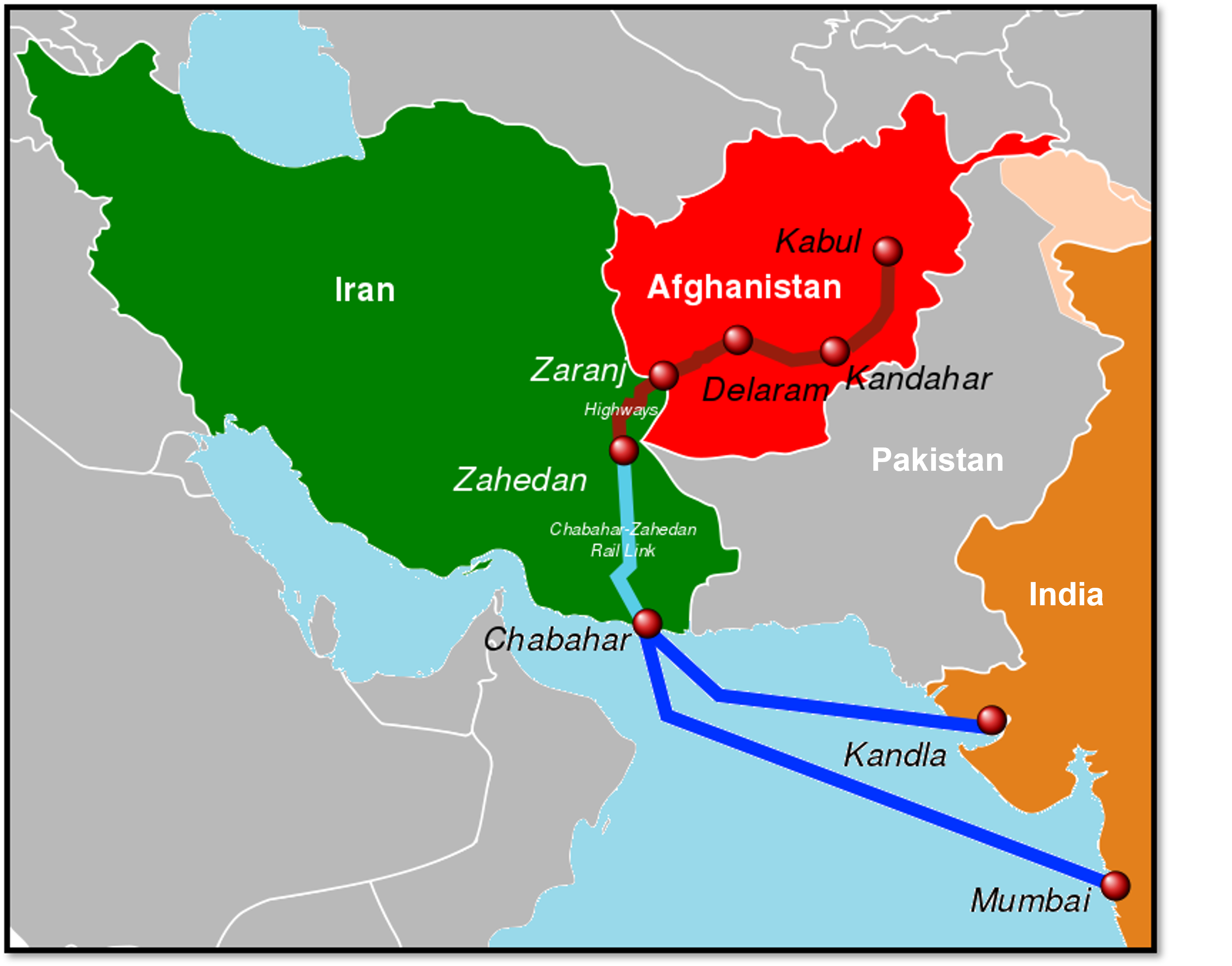
Cross-border trade: Since 2001, Iran has sought to increase exports to landlocked Afghanistan. Iran also views Afghanistan as a transportation route to expand economic ties with Central and South Asian countries. In 2017, Iran surpassed Pakistan as Afghanistan’s top trade partner.
Trade has largely been one-way. In 2019, Iranian exports—including electricity, oil, cement, machinery, metal products, pharmaceuticals, wheat, fabrics and edible oils—totaled $1.24 billion. But Afghan exports to Iran –including fruit, nuts, carpets, cotton and wool – amounted to only $15 million. Between March and June 2021, 11 percent of Iran’s non-oil exports went to Afghanistan.
Water resources: For decades, Iran and Afghanistan have disputed how to share water resources. The Helmand River flows from the mountains of the Hindu Kush through Afghanistan into southeastern Iran, where it is critical for agriculture, fishing and human consumption. The problem in modern times dates to the 1940s and 1950s, when Afghanistan built two dams—the Kajaki and the Grishk—on the Helmand River that could curtail water flow into Iran. In 1973, the two countries signed a treaty on sharing water resources, which focused heavily on distribution of water from Helmand River, but the accord was neither ratified nor implemented.
Subsequent Afghan governments, including the Taliban, built, repaired or upgraded dams on the Helmand. From 1998 to 2001, the Taliban closed the sluices of the Kajaki Dam, cutting off water to Iran during a drought. In 2021, Afghanistan inaugurated another dam, the Kamal Khan, on the Helmand.
Amnesty International says Taliban fighters recently tortured and killed members of an ethnic minority in Afghanistan, fueling fears that they will again impose a brutal rule. https://t.co/tSvLOITUK4
— The Associated Press (@AP) August 20, 2021
The Shiite minority: Iran has long supported the Hazaras, a historically oppressed ethnic minority who make up between 10 percent and 20 percent of Afghanistan’s population. Most Hazaras, like most Iranians, are Shiite. They also speak a dialect of Persian. When the Taliban last ruled Afghanistan, it carried out waves of mass killings of Hazaras in 1998, 2000 and 2001.
After the Taliban fell, Iran cultivated influence among the Hazaras by funding cultural and religious activities as well as local media. In 2013, the Islamic Revolutionary Guard Corps (IRGC) began recruiting Hazaras to fight in the new Fatemiyoun militia on behalf of Syrian President Bashar al Assad, a key ally of Iran. Over the next four years, the IRGC deployed to Syria up to 50,000 Afghans, mostly refugees who were living in Iran.
The Islamic State-Khorasan (ISIS-K): Iran has been deeply concerned about the Afghan branch of the Islamic State that emerged in 2015. ISIS-K considers Shiites apostates and has targeted them in Afghanistan. In 2020, ISIS-K gunmen allegedly killed 16 people, including infants, at a maternity hospital in a mostly Hazara neighborhood in Kabul. In December 2020, Iranian Foreign Minister Mohammad Javad Zarif suggested that the Afghan government consider regrouping Fatemiyoun fighters for the fight against ISIS-K.
Diplomatic and Economic Investment
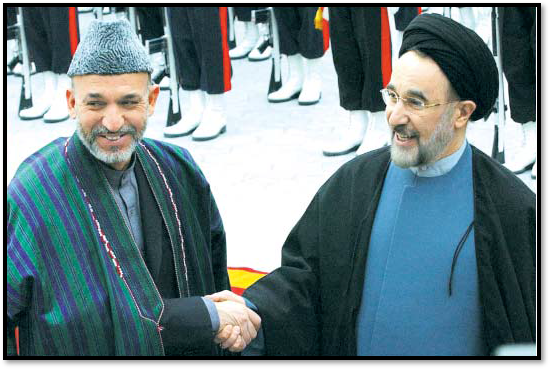
Iran has long supported efforts to stabilize Afghanistan. Tehran was a key player during the Bonn talks, the international diplomacy to form a new government after the U.S.-backed Northern Alliance toppled the Taliban government in 2001.
The Iranian delegation, headed by then-Deputy Foreign Minister Mohammad Javad Zarif, made two particularly important contributions, according to James Dobbins, the U.S. envoy. First, Iranian diplomats suggested that the Bonn agreement require the new Afghan government to commit to holding democratic elections and fighting terrorism, items that were omitted in the initial draft. Second, Zarif persuaded the Northern Alliance to give up several ministries, paving the way for the formation of Hamid Karzai’s government.
Iran has also invested heavily in the economic development of its eastern neighbor, the seventh poorest country in the world. At the 2002 Afghanistan Recovery and Reconstruction Conference in Tokyo, Iran pledged $560 million over five years. Iran pledged another $100 million at the 2006 London Conference.
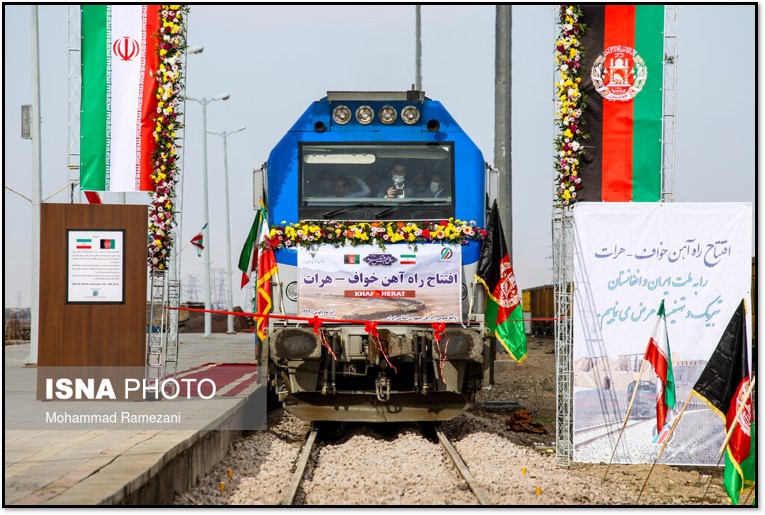
Iran helped construct roads, railways, schools, energy and water infrastructure, especially in central and northern Afghanistan. In 2011, Iran announced that it had spent $600 million on infrastructure alone.
Iran funded construction of the first railway link between the two countries, a 90-mile (140 kilometer) line from Khaf in northeastern Iran to Ghoryan in western Afghanistan. The line, inaugurated in 2020, is designed to eventually extend another 53 miles to Herat, Afghanistan’s third largest city. Much of Iran’s investment has been focused in and around Herat. For centuries, the city has been in Iran’s cultural sphere of influence. It was ruled by the Iranian Safavid dynasty from 1507 to 1716. The Iranian Qajar dynasty only relinquished its claim to Herat after losing to the British in the Anglo-Persian war of 1856-57.
Iran has reprised its mediator role since Afghan President Ashraf Ghani announced a road map for potential peace talks with the Taliban in November 2018. On December 26, 2018, Ali Shamkhani, the secretary of Iran’s Supreme National Security Council (SNSC), visited Kabul to meet with Afghan officials. He announced that Iran had been holding talks with the Taliban in coordination with the Afghan government. Four days later, a Taliban delegation visited Tehran for talks. “Since the Islamic Republic of Iran is a powerful neighbor of Afghanistan, we should discuss the future of our country with Tehran in order to take positive steps towards strengthening friendship and peace on both sides,” Taliban spokesperson Zabihullah Mujahid told the Iranian Labour News Agency in January 2019. Iran hosted more Taliban delegations in September 2019, November 2019, January 2021 and July 2021.
Shifting Relationship with the Taliban
Iran, a predominantly Shiite country, opposed the Taliban, a Sunni movement far more rigid in its strict application of Islamic law, when it ruled most of Afghanistan from 1996 to 2001. In 1998, tensions between Iran and the Taliban almost escalated into war after eight Iranian diplomats and an Iranian journalist were killed by Taliban militants in northern Mazar-i-Sharif. When the Iranian nationals went missing, Supreme Leader Ayatollah Ali Khamenei said that the “worthless and lowly” Taliban had “no understanding of Islam or politics.”
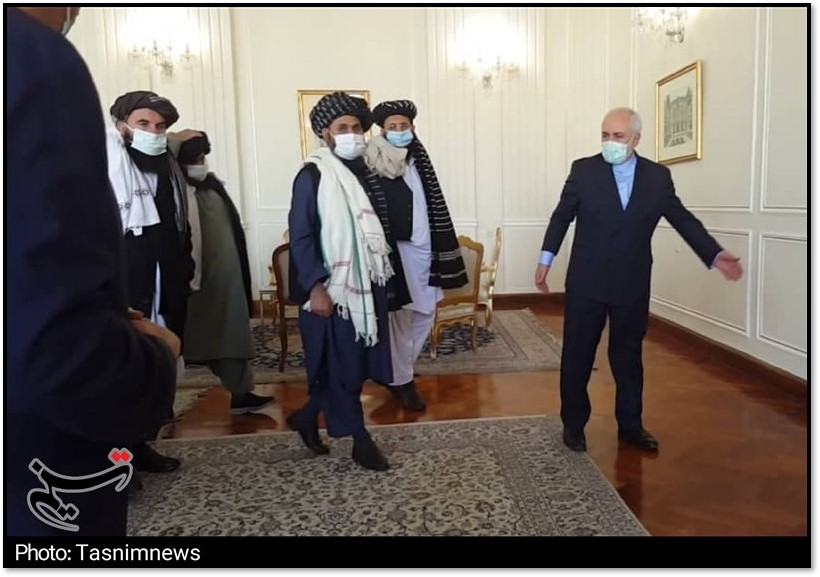
But since at least 2007, the Islamic Republic has tried to navigate a policy that includes outreach to both the elected Afghan government and the Taliban. Iran covertly armed, trained and funded the Taliban while engaging with Kabul. Tehran provided the Taliban with small arms, explosives, mortars, RPGs, heavy machine guns, and rockets, according to the Pentagon.
In 2015, a Taliban delegation led by Muhammad Tayyab Agha, the head of the Taliban’s political office in Qatar, visited Tehran for talks on Afghanistan and regional issues. The Taliban acknowledged that its officials had visited Iran before. In 2016, Taliban leader Mullah Akhtar Mohammad Mansour secretly visited Iran for talks; he was killed in a U.S. drone strike as he returned to Pakistan.
In 2019, the U.S. Defense Intelligence Agency assessed that Tehran did not want to return the Taliban to power but aimed to “maintain influence with the group as a hedge in the event that the Taliban gains a role in a future Afghan government.” In August 2021, the Taliban took Kabul and pledged to form an inclusive government.
Iran-Afghanistan Bilateral Relations (July 2021- )
The following is a timeline of key developments since the U.S. military withdrew from Bagram Airfield on July 2.
July 7-8: In Tehran, Foreign Minister Mohammad Javad Zarif hosted peace talks with Sher Mohammad Abbas Stanikzai, the Taliban’s chief negotiator, and former Vice President Younus Qanooni, representing the Kabul government. Zarif urged them to “take difficult decisions today for the future of their country.” Iran was “ready to assist the dialogue” and to “resolve the current conflicts in the country” following the “failure of the U.S. in Afghanistan,” he said. Zarif subsequently tweeted that the meeting had been “cordial” and promised Iran would stand with Afghans on their road to peace.

After further talks on July 8, the two sides released a joint statement condemning attacks on civilians and public institutions. They agreed that “war is not the solution to the Afghanistan problem.”
Iran has deployed its 65th Airborne Special Forces Brigade (NOHED) in Taibad along the Afghan border amid Taliban's seizure of border crossings pic.twitter.com/9t9WfcdbCx
— Reza Khaasteh (@Khaaasteh) July 11, 2021
July 9: The Taliban seized Islam Qala, a major border crossing between Iran and Afghanistan. The crossing had reportedly generated some $20 million in monthly revenue for the Afghan government. Videos circulated of Taliban fighters removing the Afghan flag from the border crossing.
July 15-16: Rasoul Mousavi, the head of the west Asia department in Iran’s foreign ministry, visited Kabul for talks with senior Afghan government officials, including Abdullah Abdullah, the chairman of the High Council for National Reconciliation. “Iran supports putting an end to the situation in Afghanistan and resolving the crisis through dialogue,” Mousavi told Abdullah. “Opportunities pass like clouds. The opportunity of peace must be taken today, not tomorrow, as it might be late,” Mousavi tweeted on his way back to Iran on July 17.
Aug. 1: Iran’s embassy in Kabul urged Iranians outside of the capital to leave Afghanistan. “It is recommended to the nationals of the Islamic Republic of Iran who live or do business in Afghan districts and cities other than the city of Kabul to immediately leave the Afghan territory,” the embassy said in a statement following reports of Taliban attacks on an airport in Kandahar.
Aug. 5: Iran reportedly allowed some Afghans with legal documents, including government officials and their families, to enter via a crossing with Afghanistan’s Nimruz province. But undocumented Afghans were reportedly turned away.
A new video shows commander of Iranian border guards talking with #Taliban militants, refusing to hand Afghan army forces who fled to the Iranian side of the Milak border crossing. He says they’ve taken refuge in Iran and we don’t return them by force. pic.twitter.com/6FNHmlntS0
— Fereshteh Sadeghi فرشته صادقی (@fresh_sadegh) August 8, 2021
Aug. 8: Foreign Minister Zarif hosted Jean Arnault, the U.N. secretary general’s special envoy on Afghanistan, in Tehran. They agreed that intra-Afghan talks were the best way to stem the violence. “The international community must take an unequivocal stance in support of the political settlement for the crisis in Afghanistan and also condemn violence and its consequences,” Zarif said. He also blamed foreign powers for the chaos in Afghanistan. Arnault said that Iran and other countries in the region could play a key role in supporting the peace process.
Iran’s special envoy for Afghanistan, Mohammad Ebrahim Taherian, reiterated Tehran’s support for intra-Afghan talks during a phone call with Abdullah Abdullah, the head of Afghanistan’s High Council for National Reconciliation.
In a video circulated on social media, Iranian border guards refused to hand over Afghan army troops to the Taliban.
Aug. 9: Foreign Ministry Spokesperson Khatibzadeh said that Iran was in contact with the Taliban regarding border security. “There have been occasional developments at our borders, but the borders have been calm during this period with the efforts of the border guards and the courageous Army forces, Khatibzadeh said. “We have tried to send the message that Iran’s borders must remain calm.”
Aug. 10: Afghan Foreign Minister Mohammad Hanif Atmar hosted Iran’s special envoy, Mohammad Ebrahim Taherian, in Kabul to discuss Tehran’s role in facilitating peace talks between the Afghan government and the Taliban.
Aug. 11: Iran and Afghanistan continued cross-border trade despite the chaotic security situation, according to Iran's customs administration. “The story about a full halt to the trade with Afghanistan is a rumor,” Ruhollah Latifi, a spokesperson, said. But he conceded that exports through the Milak border crossing in Sistan and Baluchistan province had stopped.
Aug. 12: State-run IRNA reported that Iran was temporarily closing its consulate in Mazar-i-Sharif amid escalating violence in the city.
Foreign ministry official Rasoul Mousavi confirmed that Iranian diplomats in Herat were secure and that he had made contact after Taliban forces reportedly seized the consulate. In a tweet, he referred to the Taliban as the "Islamic Emirate," the group's preferred name.
Aug. 13: In a tweet, Foreign Ministry Spokesperson Khatibzadeh urged the Taliban to ensure the “complete safety and health of diplomats and diplomatic facilities” in Herat.
Major General Hossein Salami, the commander of the IRGC, told reporters that Iranian forces had secured the eastern border. “People should not worry at all, because the scope of our observations has gone beyond the borders and we are monitoring and controlling all the developments in the neighboring country.”
Aug. 14: Former Iranian President Mahmoud Ahmadinejad claimed that a senior security official instructed him not to talk about the Taliban. The Taliban is a “serious threat to our security and the region,” he said in a video posted to social media platform Telegram.
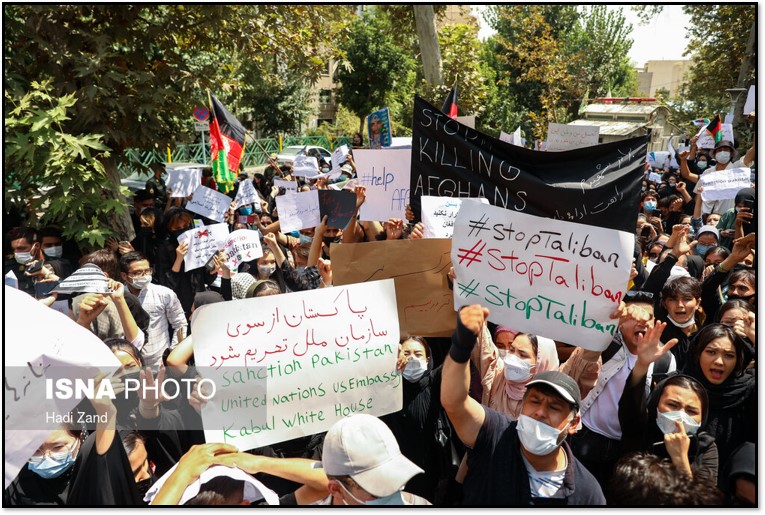
Aug. 15: Iran prepared accommodations for Afghan refugees in three border provinces -- Razavi Khorasan, South Khorasan, and Sistan and Baluchestan provinces. But Iran expected Afghan refugees to “return home when the situation improves in Afghanistan,” Hossein Ghasemi, the head of the Interior Ministry’s office of border affairs, told IRNA news agency.
Foreign Minister Zarif welcomed former Afghan President Karzai’s announcement of a Coordination Council of senior Afghan leaders to meet the Taliban and manage the transition. “We hope that it can lead to dialogue,” Zarif tweeted. “Iran stands ready to continue its peacemaking efforts.”
Afghans in Tehran, Mashhad, and Qom protested the Taliban takeover of Kabul. Hundreds of Afghans stood outside the Afghan embassy chanting “Death to Pakistan, Death to the Taliban.”
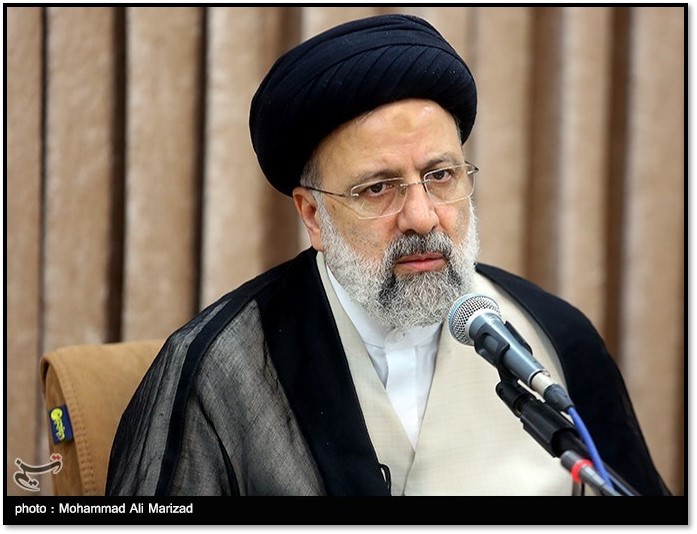
Aug. 16: President Ebrahim Raisi said that the U.S. “military failure” in Afghanistan could pave the way for peace. “America’s military defeat and its withdrawal must become an opportunity to restore life, security, and durable peace in Afghanistan. Iran backs efforts to restore stability in Afghanistan and, as a neighboring and brother nation, Iran invites all groups in Afghanistan to reach a national agreement.”
Foreign Minister Zarif was reporting directly to Raisi on developments in Afghanistan, Amwaj.media reported. The outgoing diplomat was expected to be replaced by Raisi’s nominee, Hossein Amir-Abdollahian.
A group of Afghan women gathered near the Shrine of Fatima Masumeh in Qom to protest the Taliban's takeover.
Aug. 17: Foreign Ministry Spokesperson Khatibzadeh said that Iran’s embassy in Kabul was open, although the number of staff had been reduced. He added that the consulate in Herat was also open. “Our diplomats are safe and have no problem traveling to Iran, but for safety reasons, they have preferred to remain in the mission for the time being.”
A prominent Sunni cleric in Iran, Maulvi Abdul Hamid Ismailzehi released a statement congratulating the Taliban. “The great and remarkable victory of the Taliban, which was a result of jihad, martyrdom and patience in the cause of truth against the aggressor occupiers tand the failed, inefficient and corrupt government, for the Islamic Emirate,” he said on his website. “Congratulations to the honorable scholars and general public of the zealous and struggling nation of Afghanistan.”
Afghans in Isfahan, a city in central Iran, demonstrated against the Taliban takeover. They called the Taliban “enemies” and criticized Afghan President Ashraf Ghani for fleeing the country.
Aug. 18: Ali Shamkhani, the secretary of the Supreme National Security Council, welcomed the U.S. departure from Afghanistan and said that Israel would eventually follow suit by withdrawing from territory claimed by Palestinians. “The end of any occupation is a humiliating dismissal. The fate that befell the United States in Vietnam, #Afghanistan and Iraq is also the inevitable fate of the occupying Zionist regime,” he tweeted.
Mohammad Reza Naghdi, the IRGC’s deputy director of cultural and social affairs, also hailed the withdrawal. “The result of resisting against a great power is victory,” he told Sepah News. The U.S. withdrawal “does not require complex analysis, just as we saw the failure of the British and Soviet Union empires in Afghanistan lead to the collapse of those powers.”
In a tweet, Foreign Minister Zarif criticized the 20-year involvement of U.S. and NATO forces in Afghanistan. “They invaded & occupied Afghanistan & elsewhere ONLY to pursue their own interests—but couldn't even achieve that.”
The director of the Interior Ministry’s office of border affairs, Hossein Ghasemi, told local media that he had instructed border guards to turn away Afghan refugees to prevent the spread of the coronavirus. Another Interior Ministry official, Mehdi Mahmoudi, the Director General of Citizens and Foreign Immigrants, said that Iran was not establishing refugee camps for Afghans. “We feel that there is no such space to come to Iran,” Mahmoudi told the Iranian Student News Agency.
The US escape from Afghanistan is the final nail in the coffin of myth of American hegemony in West Asia.
— Iran Foreign Ministry 🇮🇷 (@IRIMFA_EN) August 19, 2021
The occupation ended the only way it could: in shambles, leaving behind death & destruction.
Legacy of US occupation is wake-up call for those who look to DC as final hope. pic.twitter.com/Jf2F4HEvBZ
Aug. 19: More than 600 Afghans crossed into Iran through the Milak crossing in Sistan and Baluchistan province each day since the Taliban began making major territorial gains in Afghanistan, the Tehran Times reported. Iran’s armed forces said that they provided Afghans with masks, disinfectants, food and medicine.
In a tweet, the foreign ministry framed the U.S. withdrawal as the "final nail in the coffin" of the "myth of American hegemony" in the region.
Aug. 21: Afghanistan’s embassy in Tehran reopened along with the country’s consulates in Mashhad and Zahedan.
Aug. 23: Iran’s Oil, Gas and Petrochemical Products Exporters Union said that it had resumed exports of gasoline and gasoil to Afghanistan in response to a Taliban request. The Taliban had also cut tariffs on imported fuel from Iran and neighboring countries by 70 percent.
Garrett Nada is the managing editor of The Iran Primer at the U.S. Institute of Peace. Renee Perper, a research assistant the Woodrow Wilson Center contributed to the timeline.
Photo Credits: Afghan refugees via ISNA; Modified Chabahar transit corridor map, original by RaviC (CC BY-SA 4.0) via Wikimedia Commons; Iran-Afghanistan rail link via ISNA; Farzad Khorasani, CC BY-SA 4.0, via Wikimedia Commons; Afghan protestors in Tehran via ISNA; Raisi via Tasnim News Agency (CC BY 4.0)
